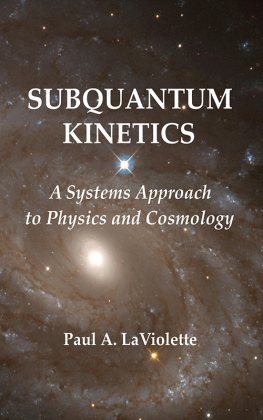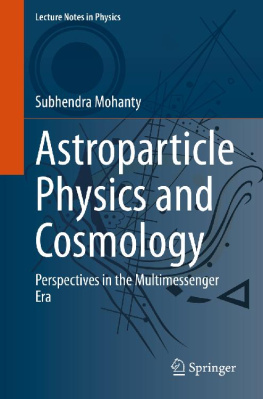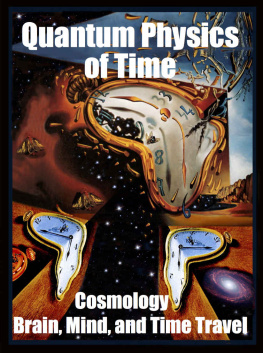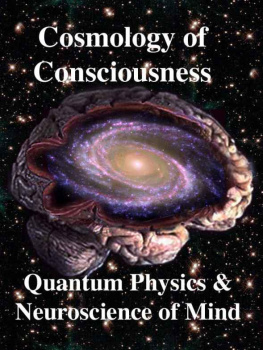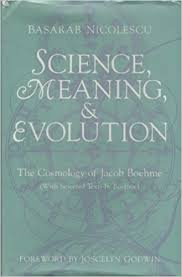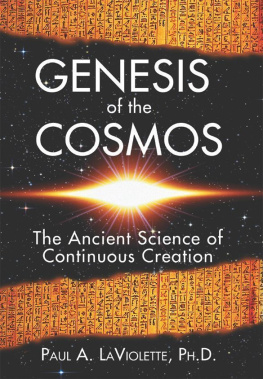Paul A. La Violette - Subquantum Kinetics: A Systems Approach to Physics and Cosmology
Here you can read online Paul A. La Violette - Subquantum Kinetics: A Systems Approach to Physics and Cosmology full text of the book (entire story) in english for free. Download pdf and epub, get meaning, cover and reviews about this ebook. genre: Computer. Description of the work, (preface) as well as reviews are available. Best literature library LitArk.com created for fans of good reading and offers a wide selection of genres:
Romance novel
Science fiction
Adventure
Detective
Science
History
Home and family
Prose
Art
Politics
Computer
Non-fiction
Religion
Business
Children
Humor
Choose a favorite category and find really read worthwhile books. Enjoy immersion in the world of imagination, feel the emotions of the characters or learn something new for yourself, make an fascinating discovery.
- Book:Subquantum Kinetics: A Systems Approach to Physics and Cosmology
- Author:
- Genre:
- Rating:4 / 5
- Favourites:Add to favourites
- Your mark:
- 80
- 1
- 2
- 3
- 4
- 5
Subquantum Kinetics: A Systems Approach to Physics and Cosmology: summary, description and annotation
We offer to read an annotation, description, summary or preface (depends on what the author of the book "Subquantum Kinetics: A Systems Approach to Physics and Cosmology" wrote himself). If you haven't found the necessary information about the book — write in the comments, we will try to find it.
Subquantum Kinetics: A Systems Approach to Physics and Cosmology — read online for free the complete book (whole text) full work
Below is the text of the book, divided by pages. System saving the place of the last page read, allows you to conveniently read the book "Subquantum Kinetics: A Systems Approach to Physics and Cosmology" online for free, without having to search again every time where you left off. Put a bookmark, and you can go to the page where you finished reading at any time.
Font size:
Interval:
Bookmark:

1. Nucleon Core Field - prevailing concept (1978): The electric field in the core of a nucleon is assumed to be aperiodic and to rise to a sharp cusp at the particles center.
Prediction No. 1 (1973 - 1978): Subquantum kinetics predicted that the electric potential field in the core of a subatomic particleshould be Gaussian-shaped and should continue outward as a periodic field pattern of diminishing amplitude having a radial wavelength equal to the particles Compton wavelength, further that this field pattern should be positively biased in positively charged particles. Prediction published in: 1985 ( IJGS ), 1994 ( Subquantum Kinetics ), and 1995 ( Beyond the Big Bang ).
Verification (2002): Particle scattering form factor data for the proton and neutron is found to be best fit by a model in which the nucleon core electric charge density distribution has characteristics similar to those that subquantum kinetics had predicted. Energy boosting during collision, however, did cause the target nucleons to exhibit a wavelength slightly shorter than had been predicted.
2. Energy Conservation and Photon Redshifting - prevailing concept (1978): The cosmological redshift is conventionally attributed to the assumed expansion of space. Photon energy is assumed to be perfectly conserved.
Prediction No. 2 (1978): As a basic requirement of the validity of its methodology, subquantum kinetics predicted that photons should gradually redshift with time when passing through regions of low (less negative) gravitational field potential, e.g. intergalactic space. It predicted a tired-light effect, that distant galaxies should appear redshifted without the need of postulating recessional motion.
Verification (1979 - 1986): I check this photon redshifting prediction by comparing the tired-light non-expanding universe model and the expanding universe model (standard Freidman cosmology) to observational data on four different cosmology tests ( Ap.J. , 1986). The tired-light model is found to make a closer fit to observational data on all tests confirming the subquantum kinetics tired-light prediction and the notion that the universe is cosmologically stationary. These findings at the same time undermine a key support of the big bang theory. An update of this evidence is presented in .
3. Energy Conservation/Generation - prevailing concept (1978): Energy is assumed to be perfectly conserved. Stars are assumed to generate their energy either through nuclear fusion or from heat released from gravitational accretion. Planets are instead thought to acquire their luminosity from stored heat. There is no reason to believe that planets should conform to the stellar M-L relation.
Prediction No. 3 (1978 -1979): As a basic requirement of the validity of its methodology, subquantum kinetics predicted that photons should progressively blueshift in regions of high (more negative) gravitational field potential, e.g., within stars and planets and in interplanetary and interstellar space. It predicted that genic energy should be continuously created within all celestial bodies.
Verification (1979 - 1992): I tested this genic energy prediction by plotting the mass-luminosity coordinates of the jovian planets (Jupiter, Saturn, Neptune, and Uranus) to compare them with the mass-luminosity relation for red dwarf stars and found that they conformed to this relation. Others had not previously checked this because doing so didnt make sense in the context of the conventional astrophysical paradigm. This conformance suggests that the heat coming from the interiors of planets is produced in the same way as that radiating from the interiors of red dwarf stars, just as subquantum kinetics predicts. I also showed that the genic energy hypothesis predicts a slope for the planetary stellar M-L relation similar to the observed slope. The required violation of energy conservation is 10 orders of magnitude smaller than what could be observed in laboratory experiments.
4. Brown Dwarf Stars - prevailing concept (1985): Based on conventional theory, brown dwarf stars are not expected to have any particular mass-luminosity ratio. They are assumed to be stars that are not massive enough to ignite nuclear fusion and hence are merely dead stars that are cooling off.
Prediction No. 4 (1985 - August 1995): Subquantum kinetics predicted that brown dwarfs should also generate genic energy and hence, like the jovian planets, should lie along the lower main-sequence mass-luminosity relation for red dwarf stars. This prediction was published on four occasions: 1985 ( IJGS , p. 339), 1992 ( Physics Essays , ) 1994 ( Subquantum Kinetics , p. 125), and 1995 ( Beyond the Big Bang , p. 304).
Verification (November 1995, 1998): Masses and luminosities are published for the brown dwarfs GL 229B and G 196-3B. I demonstrate that the M-L data points for these dwarfs lie along the planetary-stellar M-L relation as earlier predicted. This indicates that brown dwarfs are not dead stars as previously supposed, but bodies that are actively producing genic energy in their interiors.
5. Interplanetary maser signals - prevailing concept (1985): Maser signals are believed to maintain constant frequencies over interplanetary distances since photon energy is assumed to be perfectly conserved.
Prediction No. 5 (1985): I determine the magnitude of the hypothesized genic energy photon blueshifting rate by modeling the intrinsic luminosities of the planets. I then predict that if a maser signal were transponded between two spacecraft separated by 5 AU, the signal should be found to blueshift at the rate of about 1.3 10-18 sec-1. This prediction was published on two occasions: 1985 ( IJGS , p. 340) and 1994 ( Subquantum Kinetics , p. 135).
Verification (October 1998): A group of JPL astronomers publish their discovery that maser signals transponded between the Earth and the Pioneer spacecraft blueshift at a rate of 2.9 0.4 10-18 s-1. Although they choose to interpret this as a mysterious force pushing the spacecraft toward the Sun, it also provides a close confirmation of the subquantum kinetics prediction. Their value reduces to 2.3 0.4 10-18 s-1 when the propulsive effects of waste heat from the spacecraft power source is taken into account.
6. Galactic Evolution - prevailing concept (1979): Galaxies are believed to form in various sizes as galactic-sized gas clouds gravitationally condense to form stars. The size of galaxies is assumed not to change over time. Galaxies in the immediate neighborhood of the Milky Way are assumed to have the same size ratio as young galaxies at cosmological distances.
Prediction No. 6 (1979 - 1994): Subquantum kinetics predicts that matter is continuously created throughout the universe, with the matter creation rate being highest in the vicinity of already existing matter. Furthermore it predicts that galaxies should progressively grow in size with the passage of time since they are formed by matter being created primarily in their progressively growing core and being propelled outward by core explosions. This prediction is published on two occasions, in 1985 ( IJGS , p. 335) and 1994 ( Subquantum Kinetics , p. 118).
Verification (July 1995): Observations with the Hubble Space Telescope show that younger, more distant galaxy clusters are dominated by fainter, more compact galaxies and have much fewer spiral galaxies, as compared with nearby older galaxy clusters.
Verification (2007 - 2011): Galaxy studies show evidence that the number count density of massive galaxies has progressively increased since era z = 3 with the ratio of massive ellipticals to massive spirals increasing as well. Also these studies show that the size of giant ellipticals has progressively increased over time. Also it was found that the mass density in space of supermassive galactic cores progressively increased since era z = 7. See .
Font size:
Interval:
Bookmark:
Similar books «Subquantum Kinetics: A Systems Approach to Physics and Cosmology»
Look at similar books to Subquantum Kinetics: A Systems Approach to Physics and Cosmology. We have selected literature similar in name and meaning in the hope of providing readers with more options to find new, interesting, not yet read works.
Discussion, reviews of the book Subquantum Kinetics: A Systems Approach to Physics and Cosmology and just readers' own opinions. Leave your comments, write what you think about the work, its meaning or the main characters. Specify what exactly you liked and what you didn't like, and why you think so.

